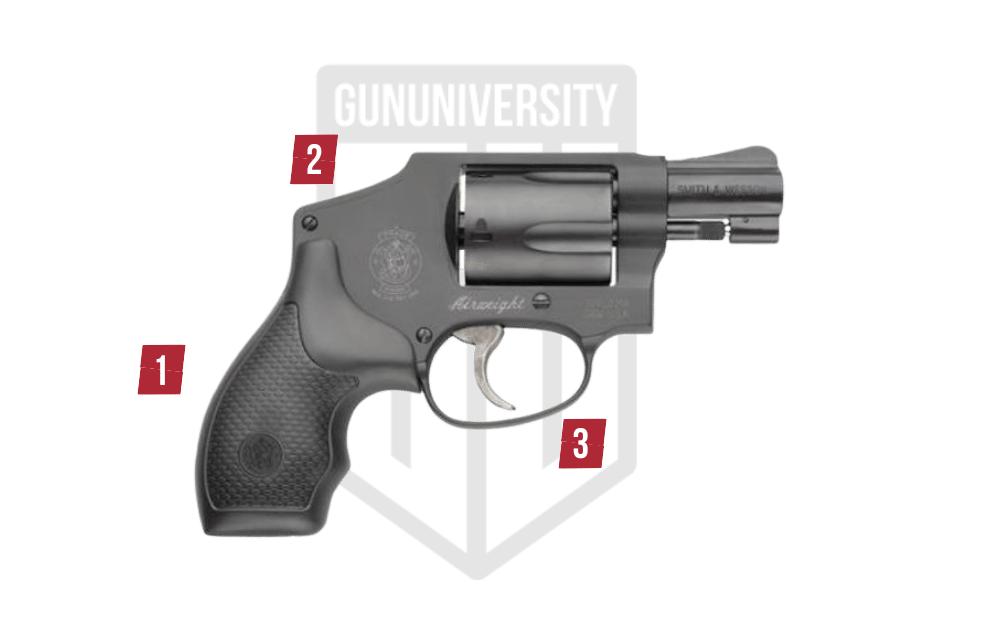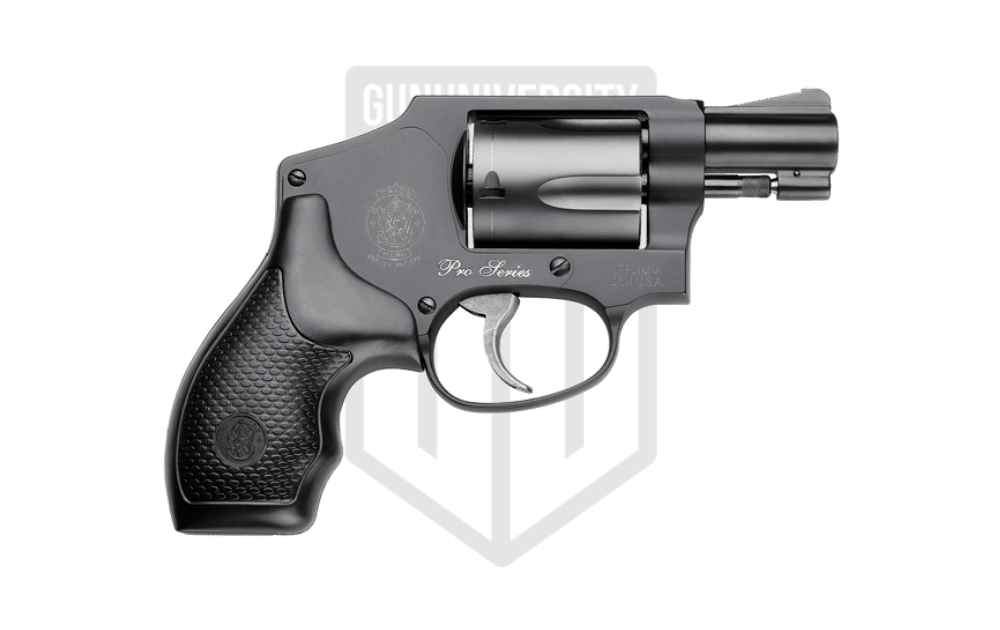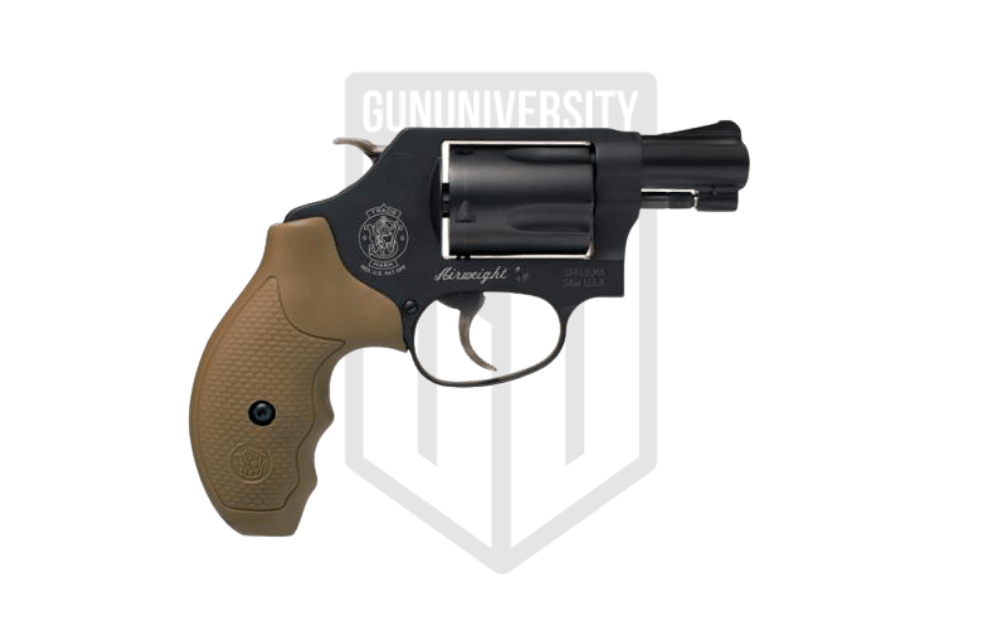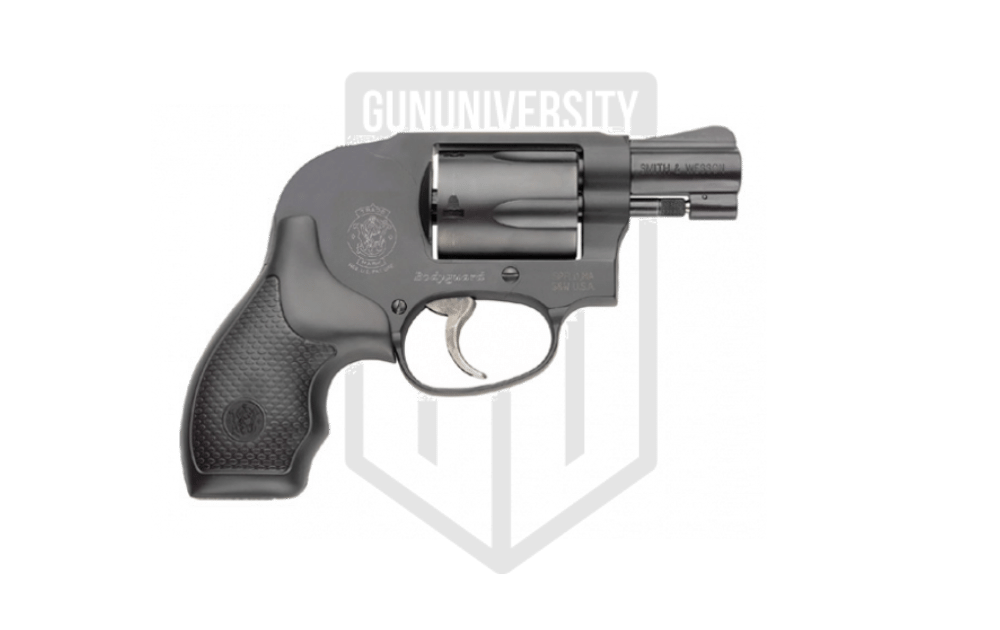Smith & Wesson’s series of subcompact five-shot revolvers has been carried in pockets and on ankles for decades. Is it an anachronism today, or still a viable defensive arm?
S&W 442 SPECS
- Caliber.38 Special
- Capacity5
- Barrel Length1.875″
- HammerInternal, Double Action Only
S&W 442 Background
Before semi-automatics became the standard handgun, revolvers were dominant. They tamed the Wild West, fought in the trenches in World War 1, and were only recently phased out in some police departments. Compact versions quickly followed the introduction of full size models for those needing concealable firepower. While the full-frame models have fallen by the wayside, there remains an active market for concealable revolvers.
There is no debate which models are the industry standard: the S&W J-frame subcompact revolver family is the one to beat. Versions have been produced with evocative names like Chief’s Special and Ladysmith, or out of exotic materials like Scandium. But the bread-and-butter variants are aluminum-framed, 1 ⅞” barrel, 5-shot .38 Specials. They are light enough to carry all day but are not fragile.
So, why does the Model 442 (and its ilk) still have a following? It generally boils down to concealability, and ease of use. Revolvers do not have manual safeties. The heavy trigger pull is generally enough to prevent accidental discharges. There is no slide to rack prior to firing. It can be fired from a coat pocket without jamming because there is no reciprocating slide. And, critically, a dud round does not require an immediate action drill to correct. You simply pull the trigger again.
This is not to say a revolver is the ultimate handgun. There are many trade-offs inherent to revolvers (e.g. low capacity, slow reloads, a heavy trigger, the risk of a bullet jumping the crimp of a cartridge case and jamming the cylinder). But if a wheel gun makes sense for your use case, the S&W 442 is worth consideration.
S&W 442 Features

1EXCELS IN DEEP CONCEALMENT
2ENCLOSED HAMMER AVOIDS SNAGGING
3DOUBLE ACTION ONLY TRIGGER
S&W 442 MODELS OR COLORS
This article specifically details the Model 442, which has an internal hammer, double action only trigger, and black finish. Very similar models are also produced with a standard spur hammer (the Model 437) or a shrouded hammer (the Model 438). Those models can be fired single-action or double-action. Identical models are also available with a silver finish (the Model 642, 637, and 638, respectively). These six models are all part of the Airweight family.
There are numerous variants outside the Airweight family, including the Airlight models with Scandium frame. Current caliber options include .22 LR and .357 Magnum. Models were also produced in 9mm and .327 Federal.
SMITH & WESSON 442 – OUR TAKE
Guns that are easy to carry are not generally guns that are easy to shoot. The 442, and similar models, are wonderful to carry. But they are not wonderful to shoot. Unlike semi automatics, which have a recoil spring to slow down the recoil impulse of firing, revolvers dump all of the energy straight into the web of your hand. This is especially true of the 442 with its split grips that place the frame against the web of the hand with no padding.
Felt recoil is not helped by the weight of the 442. Light guns kick more than heavy guns when using the same ammunition. Physics simply cannot be avoided. But a lightweight gun, especially when carried in unconventional manners, also puts less strain on the carrier than a heavy gun.
The double action trigger pull of the 442 and similar models is generally in the 12-14 pound range. That is a massive pull weight. The rightly-mocked advice of gun counter workers that all women should carry revolvers, because they are not strong enough to rack a slide, makes little sense when considering the strength that is required to pull the trigger on a DAO revolver. These heavy trigger pulls are also difficult to master, and even experienced shooters can struggle to keep their shots on paper at distances beyond 10 or 15 yards. Good technique can overcome this difficulty, but it will exacerbate any existing flaws.
The ballistics of the .38 Special from a barrel less than two inches are not incredible, but are probably adequate in its intended role. Ammunition selection is very important. Thankfully, there are many good hollow point loadings on the market that make the most of the short barrel.
J-frames are not known for excellent sights. The 442 is equipped with a simple black front sight and a groove in the frame for a rear sight. Needless to say, they are not adjustable. The short barrel and small frame result in a rather short sight radius of about 3.75 inches. The sights, combined with a long, heavy trigger pull, a small grip, make for a gun that is not terribly accurate. Mechanically, the gun is capable of shooting usable groups. But in the hands of a real person the results are often poor.
The model 442 has an MSRP of $532, which is not unreasonable. Revolvers are more complex to manufacture than a polymer pistol. However, Airweight models are generally the least-expensive U.S.-made revolvers in the display case. Their longevity means there are thousands and thousands of them in circulation. That prevalence means they are easy to find on the used market at prices lower than retail.
Revolvers are known for reliability because they do not depend on the force of a fired round to operate the action. The rotation of the cylinder and cocking of the hammer are performed entirely by the work of the trigger finger. This means that ammunition-induced malfunctions are more rare with revolvers than pistols. However, low quality ammunition can still cause issued in a revolver. The recoil force can cause improperly-crimped bullets to work their way forward out of the brass case. In severe cases, this can result in a cartridge long enough to jam the cylinder in place and prevent its movement. This is a rare occurrence with quality ammunition, though. I have not experienced that type of malfunction on any of the J-frames I have carried.
Reloading an empty revolver is more involved than reloading a semi auto, and reloading the model 442 is more complicated than some revolvers. Speed loaders, which hold 5 cartridges in line with the chambers and drop them all with the turn of a knob, do not work well on the 442. A much more reliable option are Speed Strips, which hold the cartridges in a line. They are then peeled off directly into the cylinder. It is my practice to always carry a speed strip or two when I have a J-frame.
Smith & Wesson 442 Pros And Cons
- Conceals like a dream
- Very reliable
- Low capacity
- Sharp recoil
- Not easy to shoot


